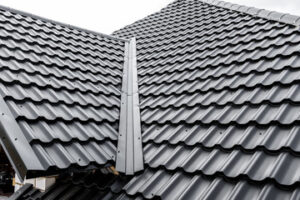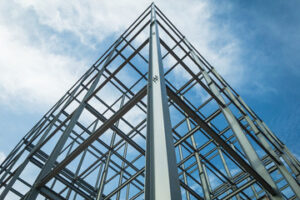Choosing the Right Roofing Company
Choosing the right roofing company is an important decision that can impact your home’s longevity. Watch out for contractors who demand hefty upfront payments or are hesitant to detail the specifics of the work.

It’s also a good idea to look for a manufacturer and contractor warranty, which will cover both the product and workmanship. Contact Roofing Company Franklin TN for professional help.
Working as a roofing contractor can be a rewarding career. The income potential, job security, and independence are major perks, but it’s also a physically demanding trade. It requires a lot of strength and stamina to carry heavy loads, work in all weather conditions, and climb ladders. Additionally, it can be dangerous, as falls from heights are common. If you’re considering this profession, understanding its pros and cons will help you make the right decision.
When choosing a roofing company, look for one that has a business license and a contractor’s license. This will ensure that the contractor has taken steps to protect themselves and their clients. It will also show that they take the time to meet legal requirements, which is a sign of professionalism. You can also ask whether they have manufacturer accreditation, which is a sign that they’re committed to the industry.
Another important factor is customer service. The roofing company should be willing to answer questions and address any concerns that you may have. They should also provide a written estimate with an itemized list of materials and labor costs. Additionally, they should offer a warranty for their work.
Stone Roofing’s Operations Manager has been with the company since April 2018, starting as a safety coordinator. She has learned that hard work pays off and believes that building strong relationships with customers is essential to the success of a roofing company. She is also committed to fostering a safe workplace and prioritizing worker well-being. She looks forward to continuing Stone Roofing’s legacy of innovation and excellence in the roofing industry. It is their goal to build a qualified team of employees skilled in various roof types and to continue providing excellent customer service.
Reputation
Your reputation is a huge part of your online brand and how potential clients see you. If you’re spending time, money, and energy getting your brand in front of your ideal audience only to be followed by a slew of negative feedback, it can destroy any trust that was built. Having a team that can monitor and manage your online reputation is vital to the success of your roofing business.
Checking your prospective roofer’s reputation is a simple step that can help you avoid hiring a contractor who may not provide quality service. A good place to start is with local professional organizations like the Better Business Bureau. This organization collects information on businesses, including complaints, and assigns a rating that gives you an idea of the way they interact with their customers.
Other online review sites, like Yelp and Google My Business, can also give you a glimpse into the customer experience that you can expect from a company. Having a positive online reputation can be one of the best ways to gain new clients and keep your existing ones coming back. When potential clients see that you care about customer satisfaction, they are more likely to hire you.
Warranty
Choosing a roofing company that offers a warranty on the work they perform will protect homeowners from costly repairs in the future. Generally, these warranties cover any issues related to workmanship and materials. Some may even include a no dollar limit warranty, which covers repair costs regardless of how much they cost. However, these warranties typically require contractors to follow specific installation processes during the roof installation and commercial roof inspection procedures after the job is complete.
Whether you are looking for a roof replacement or just a minor roofing repair, it is important to choose a reputable company that offers a quality warranty. The length of the warranty and its terms will vary, but most roofing warranties will last between 20 and 30 years. You should also check the warranty’s exclusions to ensure that you are fully protected.
The two types of roofing warranties available to homeowners are manufacturer and contractor warranties. While manufacturer warranties focus on the material of the roof, contractor warranties address workmanship issues. The most common type of manufacturer warranty is a material warranty, which covers defects in shingles for up to 25 years.
Contractor warranties usually last between two and 10 years, and they can cover a wide range of issues. Some will only cover damage resulting from poor workmanship, while others will take care of any repairs needed to restore the integrity of your roof. Many contractor warranties will have a no dollar limit warranty, which provides unlimited repair costs for leaks and faulty workmanship.
A comprehensive roofing warranty will safeguard your investment against unforeseen expenses and enhance your home’s value. In addition to standard material and workmanship warranties, these warranties will often cover additional roofing components such as underlayment and barriers against ice and water. These warranties are typically backed by a non-prorated guarantee, meaning that they will not decrease in coverage over time.
Moreover, they should allow for transfer to future homeowners, which can be an attractive feature for potential buyers. This will provide peace of mind for the next owner and help you sell your home at a higher price. Considering how expensive it is to replace a roof, this extra protection should not be overlooked.
Insurance
A reputable roofing contractor will have insurance policies that provide coverage in case of damages or other incidents. It is important to note that insurance premiums depend on the extent of liability and state regulations. Generally, roofing companies have a high level of liability and need to pay more premiums than other businesses.
General Liability: This type of insurance protects a roofing company from lawsuits and other financial costs that may result from unexpected events. It also covers legal fees and judgments. This is one of the most important types of insurance for roofing contractors, as it provides peace of mind for both clients and employees.
Workers’ Compensation: This insurance covers employee injuries or illness related to work activities. It is vital for roofing contractors, as they are at a higher risk of injury than most other businesses. Moreover, roofing is a dangerous profession, and even with proper safety protocols, accidents can still happen. Having workers’ comp coverage will help cover medical expenses and lost wages.
Commercial Auto: This covers vehicles used for business operations. It is an essential coverage for roofing contractors, as they often transport materials and equipment to different job sites. Typically, commercial auto insurance has higher limits than personal auto policies and costs more per vehicle annually.
Professional Liability: This insurance protects a roofing company against claims of negligence or errors in its work. It is important for roofers, as it can be costly if a client suffers loss or damage to their property due to the company’s mistakes.
Pollution Liability: Roofing products like sealants, adhesives, coatings, and sprays create fumes that can be toxic if inhaled by individuals inside a building. Contractors pollution liability coverage is an important coverage for roofing companies, as it helps cover cleaning and cleanup expenses.
Depending on the scope of work, some roofing companies may also need to carry additional insurances, such as surety bonds or project loss insurance. Moreover, roofing contractors need to make sure their subcontractors have sufficient insurance as well. A broker can guide you through the complexities of insurance coverage options and find solutions that are cost-effective for your roofing business.

